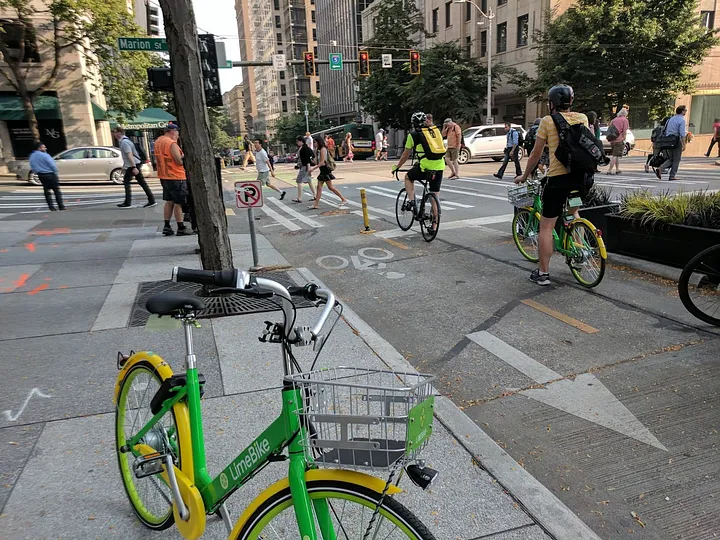Seattle, Washington, USA
Seattle: Transforming a City in Fast-Moving Transition.
Project Type:
Communications, Equity, Finance, Health & Wellness, High-Performing Government, Infrastructure
At a Glance
Initiated a data-driven approach to homelessness intervention that reoriented providers’ thinking — and their service delivery models — around the goal of ensuring any experience of homelessness in Seattle is rare, brief, and one-time.
Used a results-based contracting approach to monitor contract progress and encouraged contract managers and providers to meet regularly to review performance data.
Developed a dashboard focused on homelessness-related data from twelve departments to have better situational awareness of the homelessness crisis, in addition to how human services programs are performing.
Seattle is More than a Cup of Coffee
Fast-paced economic development is bringing plenty of high-tech jobs to Seattle and leading to spikes in household incomes, but progress isn’t being felt by everyone. It’s also contributing to a severe shortage of affordable housing and a homelessness crisis that led the City to declare a state of emergency in November 2015. This wasn’t for a lack of funding directed toward the city’s most vulnerable residents; Seattle’s budget for homeless services grew from $29 million in 2005 to $50 million in 2016 while homelessness continued to rise. Struggling to keep up, the City had to take a hard look at how it was tackling the crisis.
In response, the City launched its Pathways Home plan to shift its focus away from emergency, short-term interventions toward longer-term solutions, using data-driven decision-making to guide the way. As the City says, “Every dollar spent on emergency beds is a dollar not spent on strategies that allow people to exit homelessness.” A critical aspect of the plan was to rethink relationships with outside providers that contract with the City’s Human Services Department (HSD) to provide homelessness services, beginning with a pilot of $8.5 million worth of contracts. The pilot was carried out as part of Seattle’s engagement with What Works Cities partner the Government Performance Lab at the Harvard Kennedy School.

Through the pilot, providers were no longer tracking indicators like how many beds were filled or meals were distributed, but rather metrics such as how many people moved into permanent housing or became homeless again after being served, and how long they experienced homelessness. The approach reoriented providers’ thinking — and their service delivery models — around the goal of ensuring any experience of homelessness in Seattle is rare, brief, and one time. By using a results-based contracting approach, that’s what the City began holding providers accountable for too; contract managers and providers began meeting regularly to review performance data, enabling the City to troubleshoot problems in real time and spread the most effective practices.
“It’s not just about more money, although more resources is important. It’s also about thinking and how we do our work differently. How do we use data in a way that is not just compliance-driven, but helps us figure out what is working for people we’re trying to support out of crisis?”
Seattle has just expanded the pilot to $34 million in contracts awarded to bidders following the issuance of the City’s first competitive RFP for homelessness services in ten years. By keeping providers on target with performance benchmarks, the City aimed to double the number of people being moved into permanent housing by the end of 2018. Seattle is also expanding the performance-based model even further — across the entirety of HSD, which invests $105 million in contracts annually. Simultaneously, the City is developing a dashboard that will bring together homelessness-related data from twelve departments to have better situational awareness of the homelessness crisis, in addition to how human services programs are performing. Soon, real-time data will be available to staff, enabling a more coordinated, citywide approach to tackling the problem, tracking vendor performance, and more.
These efforts are part of a larger culture of data use throughout City Hall. Seattle was one of the first cities in the country to pursue open data and has a robust approach to engaging residents that goes beyond simply publishing data sets on its open data portal. The City is also advancing skills it developed with What Works Cities partner the Center for Government Excellence at Johns Hopkins University by rolling out performance management citywide. To help facilitate that process, the City’s Office of Performance is conducting twelve-week engagements with departments on a rolling basis to train staff. “Getting people the right resources — that’s what’s critical to getting the job done,” says former Organizational Performance Director Tyler Running Deer, who also worked extensively to help departments link their performance and budgeting goals. Seattle is also sharing progress toward citywide goals via its performance portal, one of several public-facing ways residents are kept informed.

By tracking data and seeing what works, Seattle is learning important lessons about when and how to allocate funding, manage programs, or sometimes, when to shut them down. In one recent example, the City rolled out a bike share program, but data showed use wasn’t offsetting the cost and the service wasn’t meeting users’ needs. Bike docks were taking up valuable parking space, much to the dismay of local business owners. A highly-used station was located on a hilltop, so users weren’t returning the bikes, leaving the task to a truck that drove large numbers of bikes back to the dock at the end of each day. Now the City is piloting a dockless model with three different companies that are funding the program through their own revenue, and had to provide a data-collection plan before receiving permitting. Users can take the new bikes on the routes they truly travel and park them in more convenient locations. Without the temptation to concentrate docks in the highest-income areas, the hope is that bike access will also become more equitable. So far, the results seem promising, but for this city, there’s more than time that will tell — there’s also data.
Read more about Seattle’s data journey here.